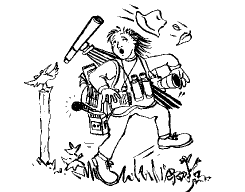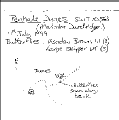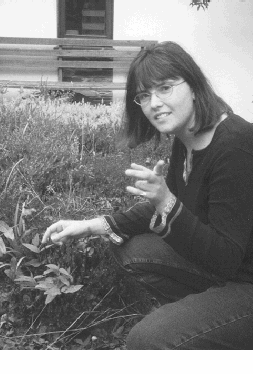|
Cornwall and the Isles of Scilly
have an exceptional natural environment, with rugged cliffs, long sandy
beaches and sand dunes, colourful heathland, ancient woodland, flower-rich
grassland and miles of the characteristic Cornish hedges. Current, comprehensive
information about these habitats, and the plants and animals living within
them, is essential if we are to safeguard them for future generations.
For this we need your help.
Wildlife records detailing the whereabouts
of particular species form some of the most valuable information. Even
simple records can be very useful, especially when they are put together
with many others to make a large database. You can find such a database
at the Environmental Records Centre for Cornwall and the Isles of Scilly
(ERCCIS), which is housed with the Cornwall Wildlife Trust. We need wildlife
records to help us protect our wild animals and plants, along with the
habitats in which they live. For instance, records concerning the type
and the number of butterflies living in our woodlands can tell us a lot
about how healthy the local environment is. They can also help us to discover
whether the things we do to encourage wildlife are actually working.
WHAT IS A WILDLIFE RECORD?
Wildlife recording is simply noting
down exactly where and when you see wild plants and animals. Many people
do this for a hobby, some becoming very knowledgeable about particular
species, as well as getting to know their local area. But you don't have
to be an expert to collect a useful record; just start with the plants
and animals that you know and you will soon find yourself learning more
and more - and getting a lot of enjoyment too!
Four pieces of information are vital
for a record to be usable. We need to know:
WHAT you saw - giving the name
of the species seen and correctly identified
WHERE you saw it - giving the
site name and Ordnance Survey grid reference
WHEN you saw it - giving the
exact date, where possible
WHO you are!
A record's use is significantly reduced
if any one of these details is missing. Take a record of a golden eagle
seen by Malcolm Dundridge in February 1998 for example. This record is
quite difficult to use as we do not know whether he saw the creature in
the north-west of Scotland or perched on church walls within the city
of Truro!
It is important to be as accurate as
you can when you record where a plant, animal or habitat was seen. Start
by noting down the name of the place where you are, for example the name
of the woodland or field, or giving the name of the nearest road or landmark.
It is extremely useful if a six-figure grid reference is also noted down.
Don't worry if you are unsure how to work out a grid reference - just
give us a call and we can send you some simple instructions. Sketch maps
can sometimes be very useful for explaining where you saw something. These
don't have to be very detailed, and often show roads, field boundaries
and buildings as well as an "X marks the spot" showing exactly where you
were!
Other details can be added to a record to make
it more comprehensive. These may include the habitats present on a site;
the number of individuals of a species seen; the behaviour of the species,
for example a bird singing; or the time of day you visited a site and
how long you were there recording.
We need you! Records Centre
Manager Sarah Myles explains how your observations can help safeguard
species and habitats. Photo: Mark Nicholson
|



